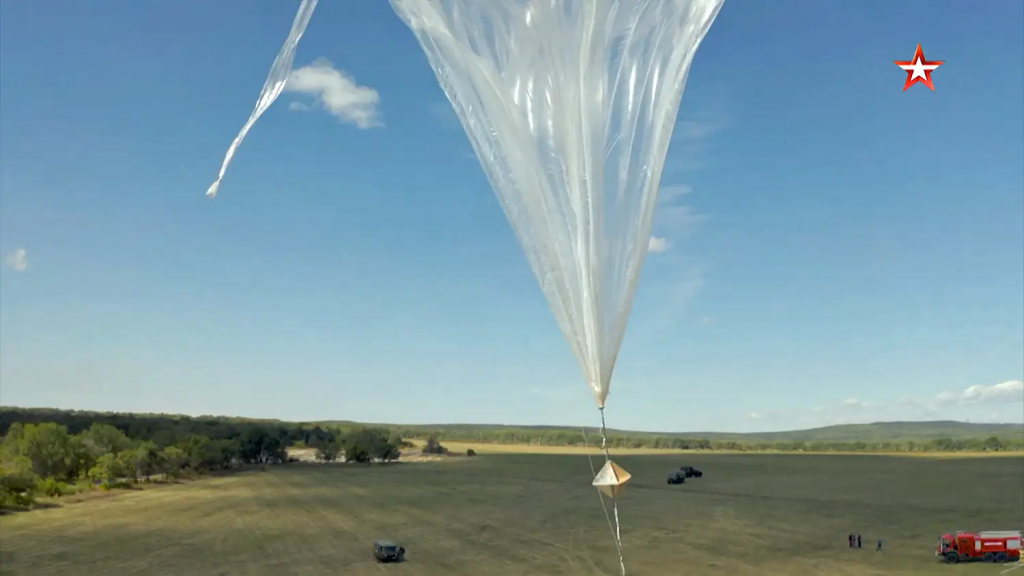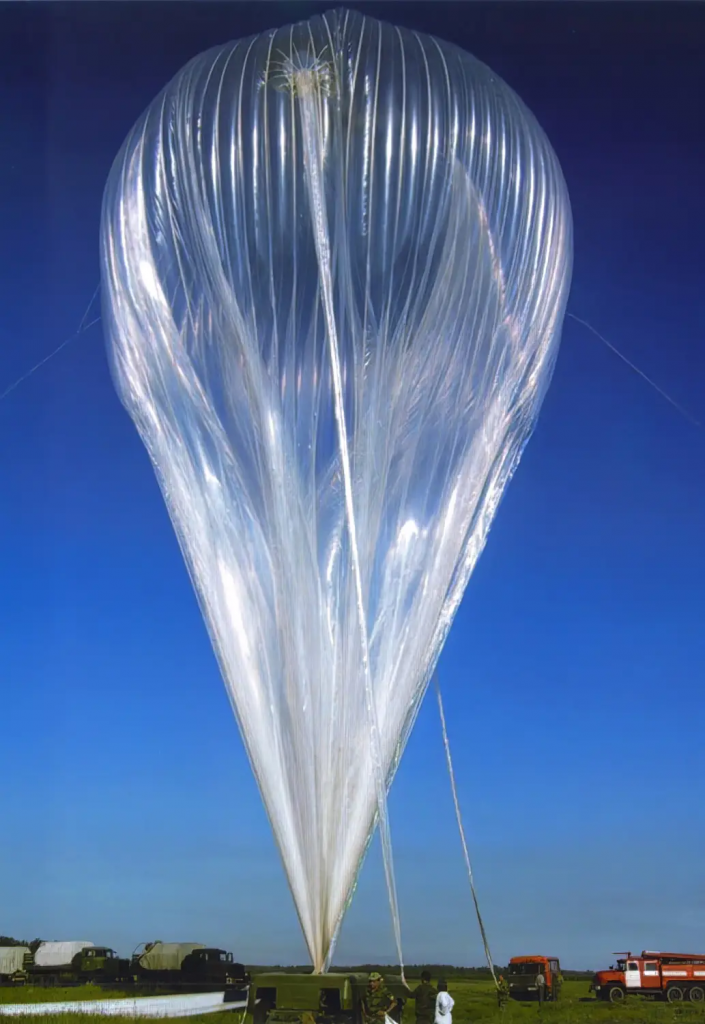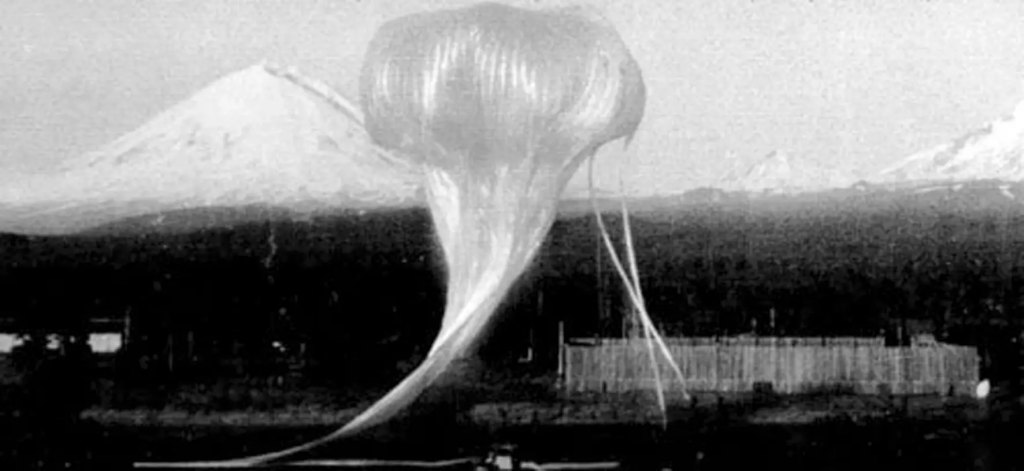The Soviet Union was known for its military technology. The Soviets used anything they could get their hands on to assert their dominance on the battle ground. Aerostat or balloons were no exception, Russia used them for spying to bombing and does the same at a limited level to date. The unpowered balloons were used in Russia in the pre-WWII era. With advancements in the aerospace tech they fell out of favor but reemerged in the cold war era when the western countries used the same for spying over Warsaw countries.
The use of aerostats by west compelled Russia to create a series of special balloon-intercepting aircraft. But that was not all, the Soviets started working on their own military balloons which led to the establishment of the OKB-424 design bureau — also known as the Dolgoprudny Automatics Design Bureau (DKBA). A facility specially designed to create new military aerostats.

One of the initial tasking done to the OKB 424 was to replicate a U.S. photo-reconnaissance balloon that had come down on Soviet territory. Over the years the facility made more than 20 variants but the crowning achievement was the Ukolka series of balloons from the 1960s, which had a capacity of 21,190,000 cubic feet and could lift a 660-pound payload to an altitude of 147,600 feet. The balloons made during the cold war era had different tasks and were made as such, some of the balloons from the cold war era are still in service.

Two combat balloons, the BAB-325 (Boyevoi Aerostat, Blizhniy; combat aerostat, short-range) and BAD-3500 (Dalniy, long-range; the numbers indicate the volume of the balloon envelope in cubic meters), were introduced in 1960, armed with incendiary bombs. The smaller of them carried 220 pounds of bombs, the larger one as much as 2,650 pounds of bombs. The BAB-325 and BAD-3500 balloons were mass-produced by the Rostov-on-Don helicopter plant, today the Rostvertol company.
The major types of balloons used by the soviets were combat balloons, photo-reconnaissance balloons, agitation balloons and the passive jamming balloons. These had different tasks as their names show. In addition of having operational utility these balloons are also used as targets during exercises or as decoys in conflicts. The first balloons to be used as targets were used back in 1961 for Russian Air Defense. Au-23 are still used as targets for air defense to this day.
These balloons have also made a mark in the ongoing Russian Ukrainian conflict, the Ukrainians have allegedly said that Russia is using these balloons equipped with radar reflectors to confuse the Ukrainian radar system. As per the Ukrainian armed forces these have been employed before an attack by Russian-operated, Iranian-supplied Shahed-type kamikaze drones.
The balloons used by the military are made of thin polythene barely 20-40 microns thick, and are, of course, single-use. The film is kept safely and right before the launch it is filled in leaving a little out of its max capacity because with the rise in the altitude the gas expands and eventually fills up the complete envelope.

The flight control equipment of the balloon is placed in containers attached to the frame of the balloon. Interestingly, a free balloon has neither an engine nor rudders. The only way to direct the balloon’s flight is to change the altitude so as to hit an air current that will carry the balloon in the required direction. Over time, due to small leaks, the balloon shrinks and descends. If it is necessary to increase the flight altitude, an appropriate part of the ballast is automatically dumped by electromagnetic valves. For example, the VAL balloon has four containers with 660 pounds of ballast, in the form of lead shot. Using air currents correctly, it’s possible for the aerostat to return to its own territory (‘boomerang’ mode).
The Aeronautics Service was established in 1957 by the name of Vozdukhoplavatelnaya Sluzhba. In the same year the Vozdukhoplavatelnyi Nauchno-Issledovatelskyi Ispytatelnyi Tsentr, or VNIITs was created, in more easier terms, Aeronautics Scientific-Research Test Center. The same now functions as the 13th Aeronautics Test Center (Vozdukhoplavatelnyi Ispytatelnyi Tsentr) and is a part of the 929th State Flight-Test Center of the Ministry of Defense of the Russian Federation in Akhtubinsk.

A specially commissioned independent set up was responsible for the balloons was made in the soviet era. In the last days of the Soviet Union there were a minimum 7 facilities of the sort. One such facility was in Odesa, Ukraine where balloons were stored and are still there today, though their serviceability is in question.
As of today, as per official Russian source, aerostats are operated by only two units, the 13th VITs in Volsk and by a duty post at Klyuchi Air Base in Kamchatka. Volsk is located deep within the European Russia however, Kamchatka’s launch site is located 1240mile off of Alaska which is an indicator that if the need arises the Russians are ready to surveil American airspace or its surroundings with these balloons.


